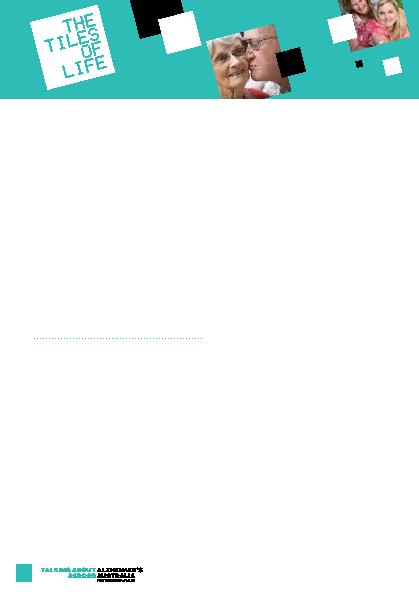
"sign posts"
2. ATMOSPHERE
3. ENGAGEMENT ANDACTIVITY
4. RESIDENT AND STAFF INTERACTION
5. A PERSON'S ROOM AS THEIR HOME
6. GETTING AROUND
7. THE CARE HOME AS A COMMUNITY
person-centred care have been developed by
Bupa Care Services in collaboration with the
Alzheimer's Australia Consumer Dementia
Research Network. We believe these
signposts will help consumers assess the
quality of person centred care offered by an
aged care home and its suitability for them or
their loved one.
Senior Consultant, The Dementia Centre,
HammondCare
Richard Fleming
Professor, Faculty of Health and Behavioural
Sciences, University of Wollongong
residential care whose behaviour is distressing
for themselves, their families and staff. There
is also a great deal of research evidence about
how to reduce distress. However, translation
still problematic. This presentation introduces
a free, downloadable web-based resource
that provides clear guidance for senior staff
to implement a successful program to make
life in residential care better for everyone.
The resource has been developed from
the practical experience and results of an
Australian Government funded Encouraging
Better Practice in Aged Care project,
conducted with 54 residents in 7 different
Australian aged care facilities in NSW and
Victoria. The resource describes the research
that underpinned the project and how,
combining evidence into a comprehensive,
broad based approach , had the ability
to substantially and significantly reduce
behaviours of concern and improve depression.
The four approaches of assessing and
modifying the physical environment to be more
dementia and aged `friendly'; training staff to
understand the origins of behavior; providing
the foundations for cohesive team-work in a
safe psychological environment; and working
with families on a more than superficial basis
will be presented, along with assessment and
outcome evaluation tools and a discussion of
the lessons learned from implementing this
project.